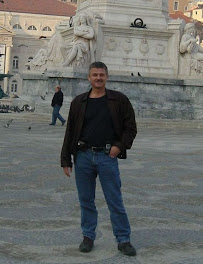I will give you some details on our current policy, and also on our findings coming from gathered data. perhaps, you can post these information on TIMS, since many patients are looking at this forum.
Our main goal of diagnostic procedures is to find all significant (i.e. impairing the outflow) venous lesions. Consequently, we perform Doppler sonography and MR venography as screening tests. Theoretically, both these examinations are not necessary, but in some patients (~10%) they are very important (anatomical variants, borderline pathology, unoperable lesions). Doppler sonography and MRV are only screening tests, i.e. they reveal that there is a pathology and in most of the cases they predict were the pathology is situated. But they are not 100% accurate. Intraoperative venography is far more reliable, but even this test is not perfect. So a combination of Doppler+ MRV + intraoperative venography is better. Now, we think about applying also IVUS (intravenous ultrasonography), but it will substantially increase the cost, so most likely we will use it only in selected cases.
Regarding the treatment, we opt for the most safe and the most efficient treatment, which of course is not possible, since those two parameters don't meet it every case. Balloon angioplasty has already been demonstrated to be very safe in a short time, and most likely safety in long time is also nearly perfect. But balloon angioplasty is not very efficacious. In some cases it doesn't work at all, in the others there are late restenoses. The short-term efficacy of an alternative treatment - stenting is much higher. But long-term efficacy (risk of late occlusion) is not known. Although occluded stent can be opened, but probably not in every case. And of course there are known early complications related to stents, namely the migration, that exclude some anatomic variants from stenting (at least using currently available stents). There is also possible the open repair of the vein, but risk and efficacy of such procedures are not known. Thus, all treatment modalities should be regarded as experimental, with still unknown efficacy and safety. The doctors always try to balance the risk and the efficacy factors, but the best solution is not always possible and is not always chosen (importantly, we don't have data on long term consequences of ballooning or stenting).
Now, what about impact of the treatment for CCSVI on clinical course of MS. Our data indicate that the things are far more complicated than it might be suspected.
And, importantly, current situation when patients must travel thousands of miles to have the treatment is neither normal nor is it safe. At the moment healthcare systems seem to overregulated. It must be changed. Especially, cooperation with neurological community and big universities with access to big public money is pivotal. Surgery is not the only solution, it must be augmented by something else.
- CCSVI is not an equivalent for MS; most likely, MS = CCSVI + some (probably more than one) other factors
- Consequently, treating CCSVI does not mean that MS is gone. Most of the patients experience good and bad days following surgery, importantly, during infection, stress, etc. the symptoms usually go back. But the symptoms also go back in a case of restenosis.
- Treatment of CCSVI does not guarantee improvement. There were some patients (not much, still, they were) who experienced worsening. Most of those patients presented with severly narrowed veins that could not be sufficiently managed with ballooning or stenting, but there were also cases with "perfectly" done surgery. So, a patient can improve after surgery (a majority, especially relapsing remitting patients), but no improvement or even worsening is also possible. A reoperation can improve the symptoms in the latter two groups, but again, not in all cases.
- Probably, surgery for CCSVI + pharmaceutical treatment will improve outcomes. Try to continue your neurological medication if it were working before surgery.
- Many patients who suffered from transient worsening of symptoms, improved after inclined bed therapy. You can try it, even if not efficient, at least it is 100% safe
- Postoperative Doppler examination is sometimes puzzling. In most of the patients the flow just after the suregery is still pathologic. Threfore we don't perform it after operation (we don't want to stress the patients). Even after some days there are still flow abnormalities, especially after ballooning. So, we think that patient should look at his/her symptoms first.
Thursday, June 3, 2010
Letter from Dr. Simka to esta, a Canadian liberated MSer
Here is a reply, posted on TiMS, to an inquiry from a Canadian lady who was worried that she may have restenosed. It answers quite a few other questions people may have, as well:
Subscribe to:
Post Comments (Atom)




Thank-you, Dr. Simka!
ReplyDeleteThank you DR> SIMKA
ReplyDelete